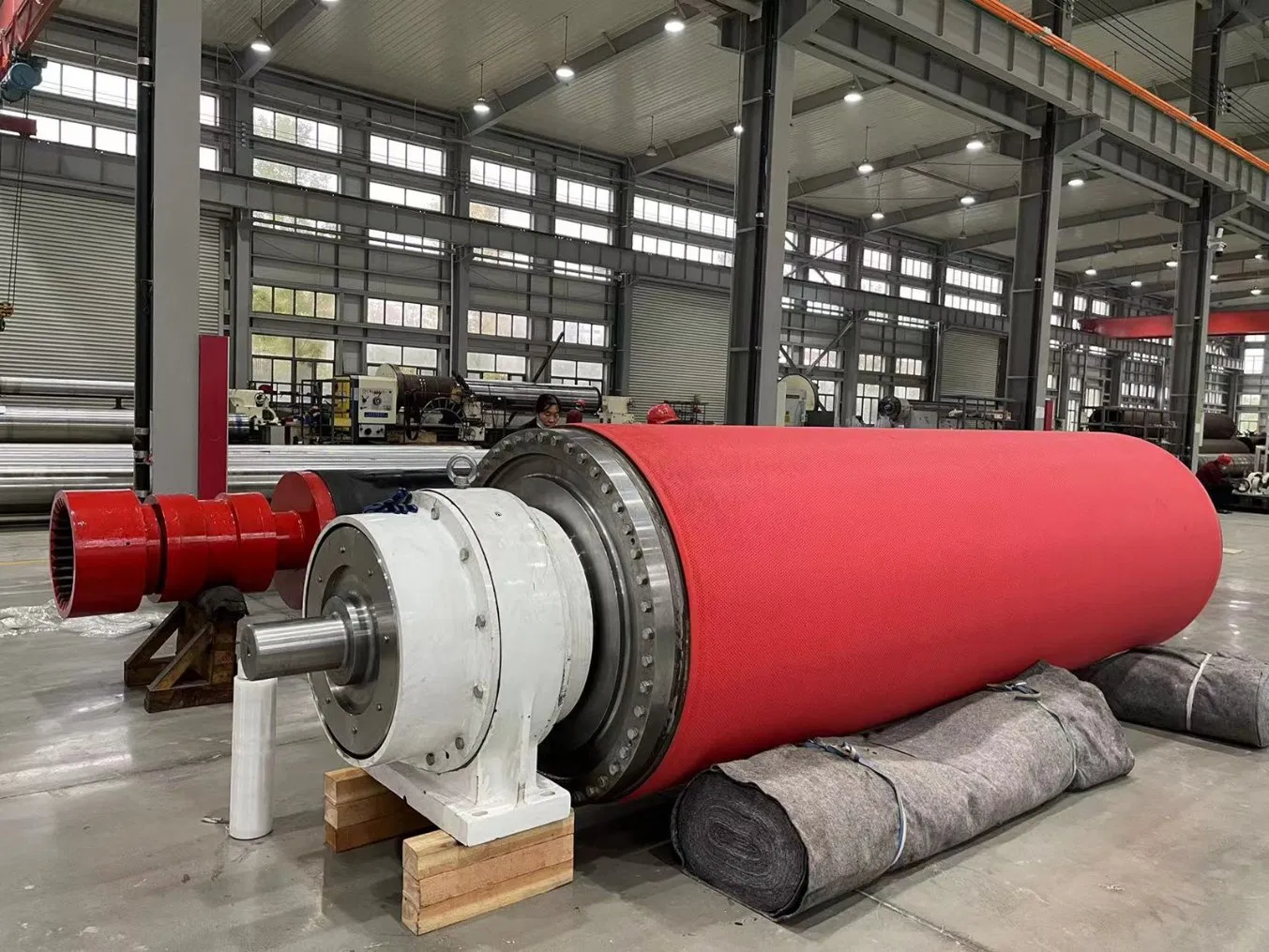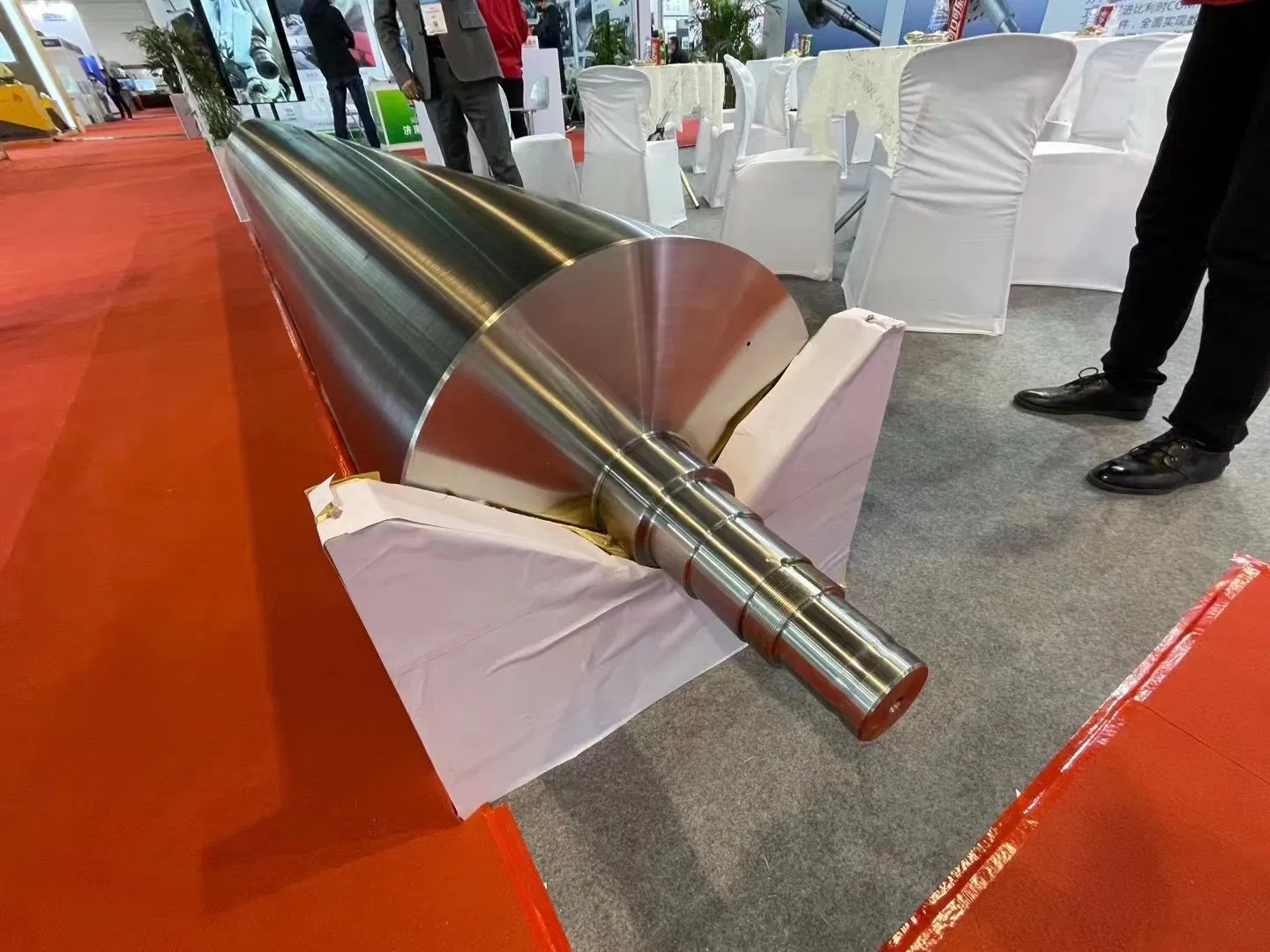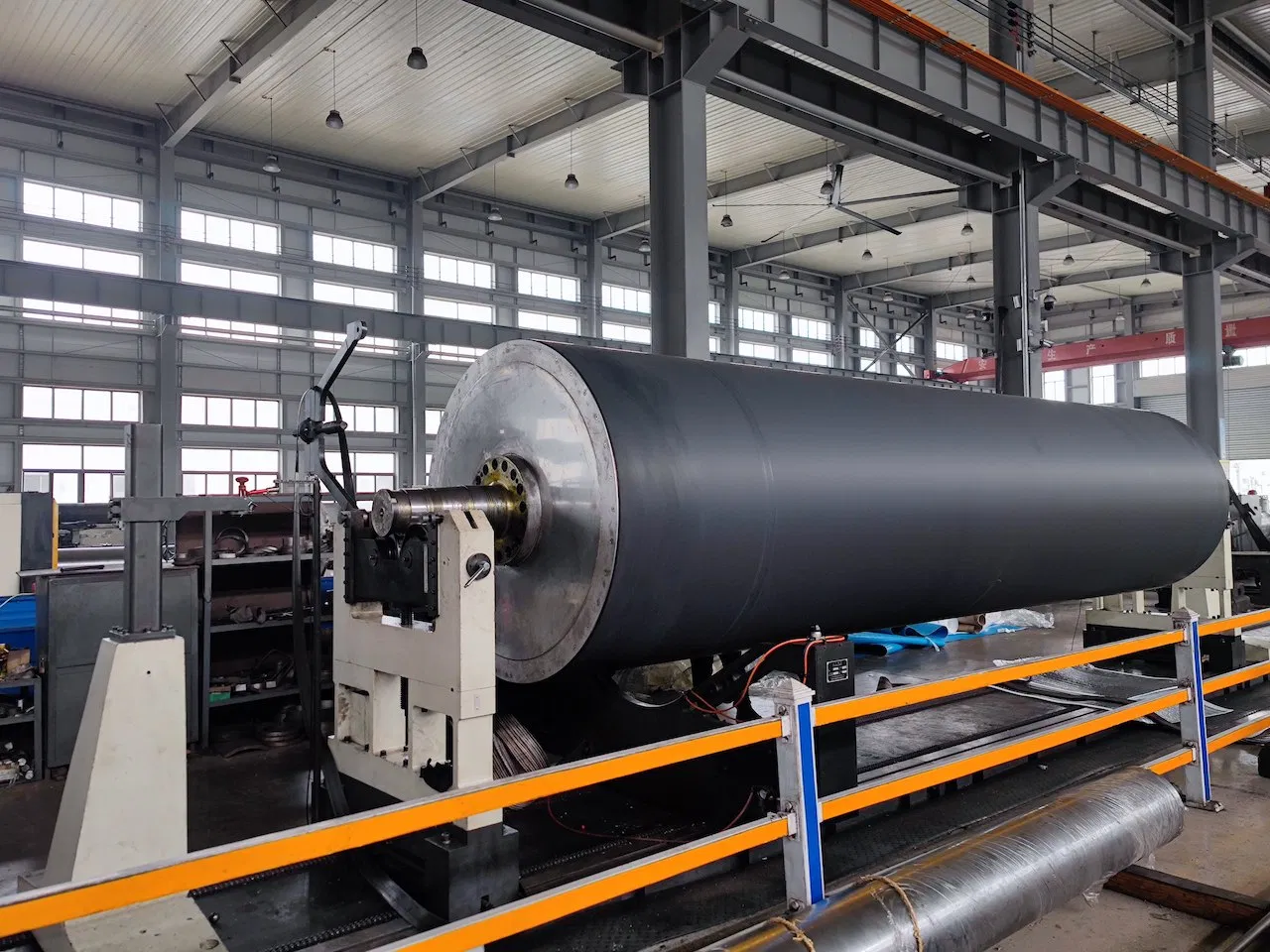In the fast-paced world of paper manufacturing, the efficiency and quality of the final product hinge on a multitude of factors. Among these, the condition and performance of paper machine rolls are paramount. Frankly speaking, a worn or improperly hardened roll can lead to everything from sheet defects and increased energy consumption to costly downtime. That's where understanding paper machine roll hardness testing methods comes into play. It's not just about measuring a number; it's about ensuring the integrity and optimal performance of these critical components.
Have you ever wondered what makes a paper machine roll perform consistently day in and day out? A significant part of the answer lies in its hardness. This property dictates how the roll interacts with the paper web, affecting everything from pressing and calendering to coating and reeling. In my experience, many paper mills overlook the nuances of hardness testing, often treating it as a secondary concern. However, I've found that a proactive approach to roll hardness assessment can save immense resources and prevent headaches down the line. This article will delve into the various paper machine roll hardness testing methods, explaining why they are crucial and how they are implemented.
Why Roll Hardness Matters in Paper Manufacturing
Before we dive into the "how," let's address the "why." Why is measuring the hardness of paper machine rolls so critical? It boils down to several key performance indicators.
Impact on Sheet Quality
The hardness of a press roll, for instance, directly influences the dewatering process. A roll that's too soft might not apply sufficient pressure, leading to higher moisture content in the sheet. Conversely, a roll that's too hard could potentially damage the paper web or lead to uneven pressing. In calendering, roll hardness is essential for achieving the desired smoothness, gloss, and caliper.
Roll Longevity and Maintenance
Hardness is a direct indicator of the roll's material integrity and its resistance to wear and deformation. Consistent hardness testing helps predict potential failures, allowing for planned maintenance rather than reactive, emergency repairs. This proactive approach minimizes unexpected downtime, a significant cost factor in any paper mill.
Process Efficiency
Properly hardened rolls contribute to more efficient operation. For example, in the pressing section, optimal hardness ensures effective water removal, reducing the energy required in the drying section. In coating applications, consistent roll hardness ensures uniform application of coating materials.
Understanding Different Roll Types and Their Hardness Needs
It's worth noting that different rolls within a paper machine have varying hardness requirements. For instance:
- Press Rolls: Typically require a specific range of hardness to effectively press water out of the paper web without damaging it.
- Calender Rolls: Need precise hardness to achieve a smooth, uniform surface finish on the paper.
- Coating Rolls: Demand consistent hardness for even application of coating materials.
- Suction Rolls: While their primary function involves vacuum, the shell material's hardness is still a factor in its durability and resistance to wear.
Each of these applications necessitates a tailored approach to hardness testing.
Common Paper Machine Roll Hardness Testing Methods
Several methods are employed to measure the hardness of paper machine rolls, each with its own principles, advantages, and limitations. The choice of method often depends on the roll material, its size, its location on the machine, and the required accuracy.
1. Shore Durometer Hardness Testing
The Shore hardness test is perhaps the most widely recognized and utilized method for measuring the hardness of elastomeric materials, including the rubber covers commonly found on paper machine rolls. This method measures the depth of indentation of a spring-loaded indenter into the material.
The Shore A and Shore D Scales
For rubber-covered rolls, the Shore A scale is most commonly used. This scale is designed for softer materials. However, for harder rubber compounds or certain polymer coverings, the Shore D scale might be employed. The indenter shape and spring force differ between these scales to accommodate varying material resistances.
Methodology
A portable Shore durometer is pressed firmly against the surface of the roll. The indenter penetrates the rubber cover, and the degree of penetration is measured on a scale from 0 to 100. A higher number indicates a harder material. The test is usually performed at multiple points around the circumference and along the face of the roll to identify any variations.

Advantages
- Portability: Handheld durometers are easy to use directly on the machine, minimizing the need to remove rolls.
- Cost-Effectiveness: Equipment is relatively inexpensive compared to some other methods.
- Speed: Tests can be conducted quickly.
Limitations
- Surface Sensitivity: Results can be affected by surface irregularities, contamination, or the thickness of the rubber cover.
- Temperature Dependence: Rubber hardness can vary with temperature, requiring controlled conditions or temperature compensation.
- Accuracy for Very Hard or Very Soft Materials: The Shore A scale is less accurate for very hard materials, and the Shore D scale is less accurate for very soft ones.
- Limited to Elastomers: Primarily used for rubber and similar soft materials, not suitable for hard metals or composites without modification.
2. Rockwell Hardness Testing
The Rockwell hardness test is a common method for measuring the hardness of metals and alloys. While paper machine rolls often have rubber covers, the underlying metal core or rolls made entirely of metal (like granite or steel calender rolls) might require this type of testing. It's a more robust method for harder materials.
Methodology
The Rockwell test involves applying a minor load to seat the indenter, followed by a major load. The hardness value is determined by the depth of permanent indentation caused by the major load. Different scales (e.g., HRC for hardened steel, HRB for softer metals) use different indenters (diamond cone or steel ball) and loads to suit various materials.
Advantages
- Accuracy for Hard Materials: Provides reliable readings for metals and hard plastics.
- Speed: Relatively quick once the equipment is set up.
- Direct Reading: Hardness is typically displayed directly on a dial or digital readout.
Limitations
- Requires Sample Preparation: Often requires a smooth, flat surface, which may necessitate removing the roll or preparing a specific test area.
- Less Portable: Rockwell testers are generally benchtop machines, making on-site testing more challenging for large rolls.
- Not Suitable for Soft Elastomers: The loads and indenters are too aggressive for typical rubber covers.
3. Leeb Rebound Hardness Testing
The Leeb rebound hardness test is a dynamic method that is particularly useful for large, heavy components that are difficult to move or test with static methods. This method is gaining traction for its practicality in paper mills. It measures the rebound height of an impact body after it has been projected onto the surface of the test object.
Methodology
A spring-loaded device propels an impact body with a tungsten carbide tip onto the surface of the roll. The impact body is then magnetically caught at its rebound height. The device calculates a Leeb hardness value (HL) based on the ratio of the rebound velocity to the impact velocity. Different impact devices (D, G, C, DC) are used depending on the material and surface finish.

Advantages
- Portability and On-Site Use: The tester is handheld and can be used directly on installed rolls, even large ones.
- Minimal Surface Damage: The impact is generally light enough not to cause significant damage.
- Versatility: Can be used on a wide range of materials, from metals to some harder plastics and composites.
- Converts to Other Scales: Many Leeb testers can convert readings to Rockwell, Brinell, and Vickers scales.
Limitations
- Surface Finish Dependence: A smooth, clean surface is crucial for accurate readings.
- Orientation Sensitivity: Readings can be affected by the orientation of the test piece (e.g., testing on a vertical surface versus a horizontal one).
- Less Accurate for Thin Materials: Requires a certain thickness of material to avoid influence from the underlying structure.
- Temperature Effects: Like other methods, temperature can influence results.
4. Ultrasonic Hardness Testing (UTM)
Ultrasonic hardness testing is another non-destructive method that offers excellent precision, especially for smaller or more intricate components, and can also be applied to larger rolls. It measures the hardness by analyzing the acoustic properties of the material.
Methodology
This method uses a transducer that emits ultrasonic vibrations. A small, precisely shaped indenter (often a Vickers diamond) is pressed into the surface with a specific force. The hardness is determined by measuring the depth of penetration or the change in ultrasonic wave propagation caused by the indentation. The resulting hardness is often expressed in Vickers (HV) or Rockwell (HRC/HRB) equivalents.
Advantages
- Non-Destructive: Leaves virtually no visible mark on the surface.
- High Precision: Offers very accurate readings.
- Versatile: Can test a wide range of materials, including thin layers and heat-affected zones.
- Portable Options Available: While some are benchtop, portable UTM devices exist.
Limitations
- Surface Preparation: Requires a very smooth and clean surface for optimal results.
- Cost: Equipment can be more expensive than Shore or Leeb testers.
- Operator Skill: Requires a trained operator to ensure correct setup and interpretation.
Implementing Effective Roll Hardness Testing Programs
Simply knowing the methods isn't enough; effective implementation is key. A robust paper machine roll hardness testing methods program involves more than just occasional checks.
Establishing Baseline Hardness
When a new roll is installed or a cover is replaced, it's crucial to establish a baseline hardness reading. This serves as the reference point for all future measurements. Documenting this baseline, along with the manufacturer's specifications, is vital.
Regular Testing Schedules
The frequency of testing depends on the roll's criticality, its operating conditions, and the material. For critical rolls in high-stress areas, monthly or quarterly checks might be appropriate. Less critical rolls might be tested semi-annually or annually. Many experts agree that a consistent schedule is more important than the exact interval.
Mapping Hardness Variations
It's not enough to take a single reading. In my experience, mapping the hardness across the entire face and circumference of the roll reveals critical information. Are there soft spots? Is the hardness uniform? This mapping can identify issues like uneven wear, improper curing of rubber covers, or internal roll damage.

Interpreting and Acting on Results
The data collected from hardness testing is only valuable if it's interpreted correctly and leads to action.
- Deviations from Baseline: Significant drops in hardness usually indicate wear, degradation, or damage.
- Inconsistent Readings: Wide variations across the roll can point to manufacturing defects, uneven loading, or localized damage.
- Comparison to Specifications: Always compare readings against the manufacturer's recommended hardness range.
If readings fall outside the acceptable range, it's time to consider actions such as regrinding, recoating, or even replacing the roll.
Training and Calibration
Ensure that the personnel conducting the tests are properly trained on the chosen methods and equipment. Regular calibration of testing equipment is also non-negotiable to maintain accuracy and reliability. This is a fundamental aspect of any reliable paper machine roll hardness testing methods protocol.
Advanced Considerations and Future Trends
The field of material testing is constantly evolving. For paper machine rolls, this means looking beyond basic hardness measurements.
Dynamic Hardness Testing
Interest is growing in dynamic hardness testing methods that can simulate the stresses and strains a roll experiences during operation. These methods aim to provide a more realistic assessment of a roll's performance under load, rather than just its static hardness.
Non-Destructive Evaluation (NDE) Integration
Combining hardness testing with other NDE techniques, such as ultrasonic thickness gauging or eddy current testing, can provide a more comprehensive picture of the roll's condition. This integrated approach can help detect internal flaws or delamination that might not be apparent from hardness measurements alone.
Material Science Advancements
Innovations in rubber compounding and polymer science are leading to covers with improved wear resistance, chemical resistance, and more stable hardness properties over a wider temperature range. Understanding how these new materials behave under various testing conditions is an ongoing area of research.
Data Analytics and Predictive Maintenance
The future lies in leveraging the data from hardness testing, along with other operational parameters, to build predictive maintenance models. By analyzing trends over time, paper mills can forecast roll failures with greater accuracy, optimize maintenance schedules, and minimize unexpected disruptions. This is a significant step up from simple roll hardness measurement.
In conclusion, mastering paper machine roll hardness testing methods is not an option; it's a necessity for any paper mill aiming for peak performance, superior product quality, and operational efficiency. By understanding the principles behind different testing techniques, implementing a rigorous testing program, and staying abreast of technological advancements, you can ensure your paper machine rolls are always in optimal condition.
For more detailed information, please visit our official website:paper machine roll hardness testing
About the author: With over 15 years of hands-on experience in paper mill operations and maintenance, Alex Chen is a recognized expert in machinery diagnostics and asset management. He specializes in optimizing the lifespan and performance of critical paper machine components, with a particular focus on roll integrity and advanced testing methodologies. Alex is passionate about sharing practical insights to improve efficiency and reduce downtime in the paper industry.


